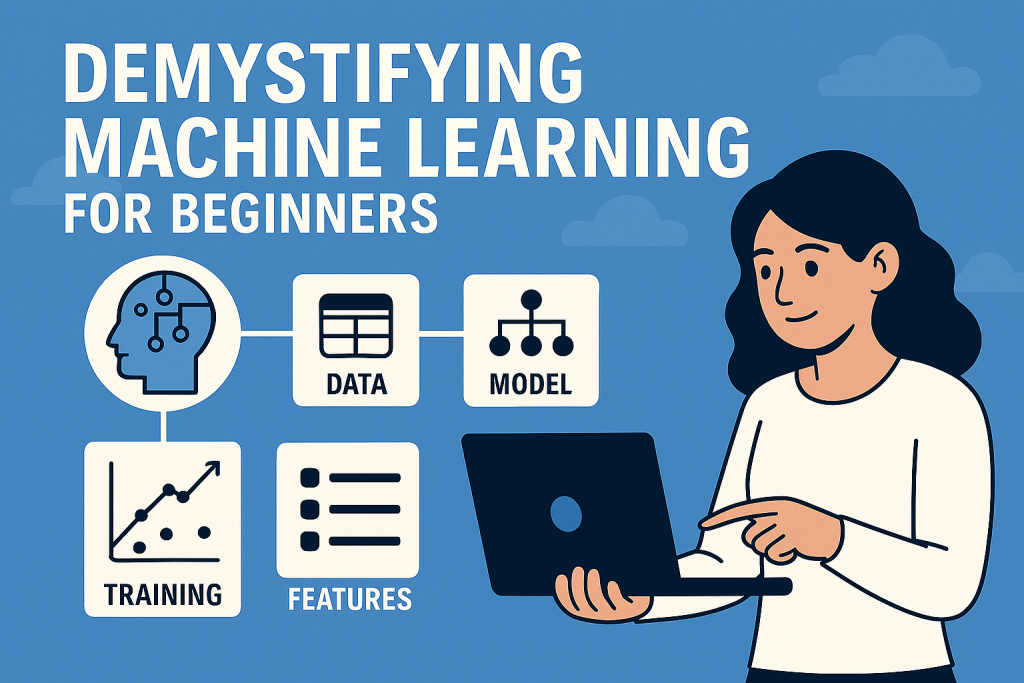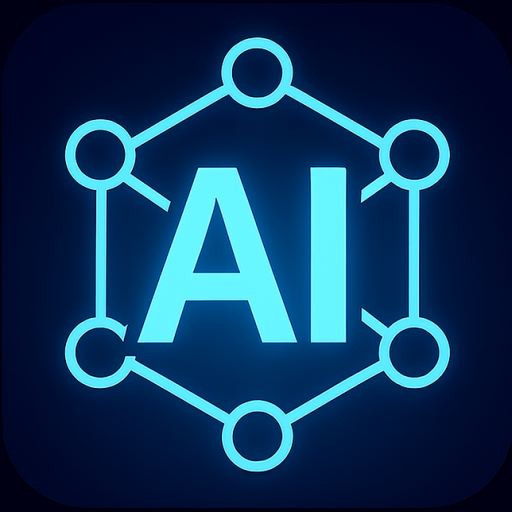
🤖 Demystifying Machine Learning for Beginners: A Practical Guide to Understanding AI’s Most Powerful Tool
Machine learning (ML) is everywhere: from the recommendations you get on Netflix to the fraud alerts from your bank. Yet for many beginners, it remains a black box of intimidating jargon and complex math. This guide breaks it down into digestible, practical insights so you can understand what machine learning is, how it works, and why it matters.
🧠 What Is Machine Learning?
At its core, machine learning is a subset of artificial intelligence (AI) that enables computers to learn from data and make decisions or predictions without being explicitly programmed. Instead of writing rules manually, developers feed data into algorithms that identify patterns and improve over time.
Think of it like teaching a child to recognize animals, not by listing every feature of a dog or cat, but by showing them many examples until they learn to distinguish them on their own.
📚 Key Concepts You Need to Know
Here are the foundational ideas that underpin machine learning:
- Data: The fuel for machine learning. This includes structured data (like spreadsheets) and unstructured data (like images or text).
- Features: Individual measurable properties of the data. For example, in predicting house prices, features might include square footage, location, and number of bedrooms.
- Labels: The correct answers used in supervised learning. For instance, if you’re training a model to recognize cats and dogs, the label tells the algorithm which image is which.
- Model: The mathematical representation that learns from data and makes predictions.
- Training: The process of feeding data into the model so it can learn.
- Inference: Using the trained model to make predictions on new, unseen data.
🧪 Types of Machine Learning
Machine learning algorithms fall into three main categories:
| Type | Description | Example |
|---|---|---|
| Supervised Learning | Learns from labeled data | Predicting house prices based on past sales |
| Unsupervised Learning | Finds patterns in unlabeled data | Customer segmentation in marketing |
| Reinforcement Learning | Learns by trial and error with rewards | Training a robot to walk or play chess |
🔍 Common Algorithms Explained Simply
Here are a few popular algorithms and what they do:
- Linear Regression: Predicts a continuous value (e.g., house price) based on input features.
- Logistic Regression: Classifies data into categories (e.g., spam vs. not spam).
- Decision Trees: Splits data into branches based on feature values to make decisions.
- Random Forests: Combines multiple decision trees for better accuracy.
- K-Means Clustering: Groups data into clusters based on similarity.
- Neural Networks: Mimics the human brain to recognize complex patterns, especially in images and speech.
Each algorithm has strengths and weaknesses depending on the problem and data type.
🛠 Real-World Applications
Machine learning is already transforming industries:
- Healthcare: Diagnosing diseases, predicting patient outcomes, and personalizing treatments.
- Finance: Fraud detection, credit scoring, and algorithmic trading.
- Retail: Recommendation engines (e.g., Amazon, Netflix), inventory optimization.
- Manufacturing: Predictive maintenance and supply chain optimization.
- Transportation: Autonomous vehicles and route planning.
📈 How Models Learn: A Simple Walkthrough
Let’s say you want to predict house prices:
- Collect Data: Gather historical data on house sales.
- Preprocess Data: Clean and format the data (remove missing values, normalize features).
- Choose an Algorithm: Use linear regression for simplicity.
- Train the Model: Feed the data into the algorithm.
- Evaluate Accuracy: Test the model on new data to see how well it predicts.
- Improve: Tune parameters or try different algorithms to boost performance.
This cycle – train, test, improve, is the heartbeat of machine learning.
🧮 Do You Need to Know Math?
Not at first. While math (especially linear algebra, calculus, and statistics) powers machine learning under the hood, many tools abstract the complexity. Beginners can start with intuitive platforms like:
- Scikit-learn (Python)
- Google Teachable Machine
- Microsoft Azure ML Studio
- TensorFlow Playground
As you progress, understanding the math will help you build better models and troubleshoot issues.
🧑💻 Getting Started: Tools and Resources
Here’s how to begin your ML journey:
- Courses:
- Books:
- “Hands-On Machine Learning with Scikit-Learn, Keras, and TensorFlow” by Aurélien Géron
- “The Hundred-Page Machine Learning Book” by Andriy Burkov
- Communities:
- Kaggle (competitions and datasets)
- Reddit r/MachineLearning
- Stack Overflow
🧭 Tips for Beginners
- Start with small projects (e.g., spam detection, movie recommendations).
- Use real datasets from Kaggle or UCI Machine Learning Repository.
- Focus on understanding the problem before choosing an algorithm.
- Don’t worry about perfection, experimentation is key.
- Document your learning and share it (GitHub, blogs, LinkedIn).
🌟 Final Thoughts: ML Is a Journey, Not a Destination
Machine learning isn’t magic: it’s math, data, and logic. The more you explore, the more intuitive it becomes. Whether you’re a student, a business analyst, or a curious professional, understanding ML opens doors to innovation, automation, and smarter decision-making.
As GeeksforGeeks puts it, demystifying machine learning is about breaking down complexity, using visualizations, and encouraging hands-on experimentation. So dive in, stay curious, and let the data guide you.

Leave a Reply